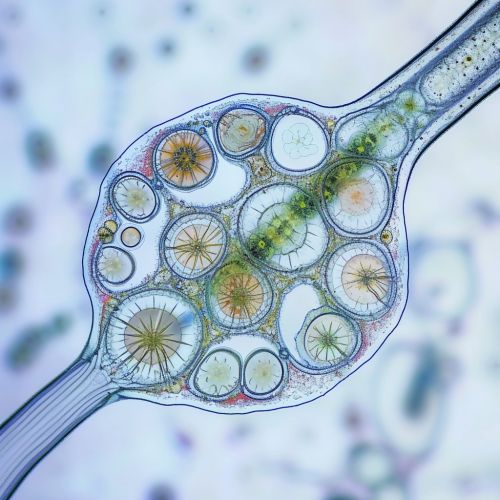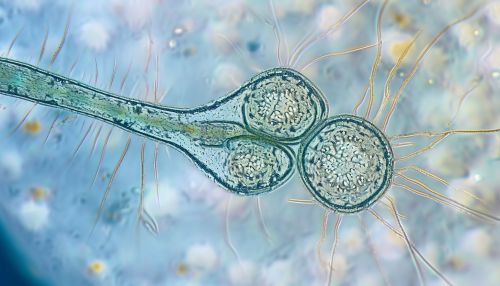Sarcomonadea
Taxonomy and Classification
Sarcomonadea is a group of Heterokontophyta or stramenopiles, a major line of eukaryotes currently containing more than 25,000 known species. This group is a part of the supergroup SAR, which also includes Stramenopiles, Alveolata, and Rhizaria. The Sarcomonadea are typically biflagellate, with the anterior flagellum covered in fine, hair-like structures known as mastigonemes.


Morphology and Structure
The Sarcomonadea are unicellular organisms, typically measuring between 5 and 20 micrometers in diameter. They possess a unique form of mitochondria known as mitochondrion with tubular cristae. The cells are typically biflagellate, with two flagella of unequal length. The longer flagellum is covered in fine, hair-like structures known as mastigonemes, while the shorter one is smooth. The cell body is covered by a layer of organic scales or a theca, which is a hard, protective covering.
Life Cycle and Reproduction
The Sarcomonadea reproduce asexually through binary fission, a process in which the parent cell divides into two identical daughter cells. Some species also have the ability to reproduce sexually, through a process known as meiosis and syngamy. During this process, two cells fuse to form a zygote, which then undergoes meiosis to produce four haploid cells.
Ecology and Distribution
Sarcomonadea are found in a wide range of environments, from freshwater to marine environments, and from polar to tropical regions. They play a crucial role in the ecosystem as primary producers and as part of the microbial loop, recycling nutrients and organic matter back into the ecosystem.
Phylogeny and Evolution
The Sarcomonadea are believed to have evolved from a common ancestor with other heterokonts. Molecular studies have provided evidence for this relationship, showing a close genetic relationship between the Sarcomonadea and other groups within the heterokonts.
